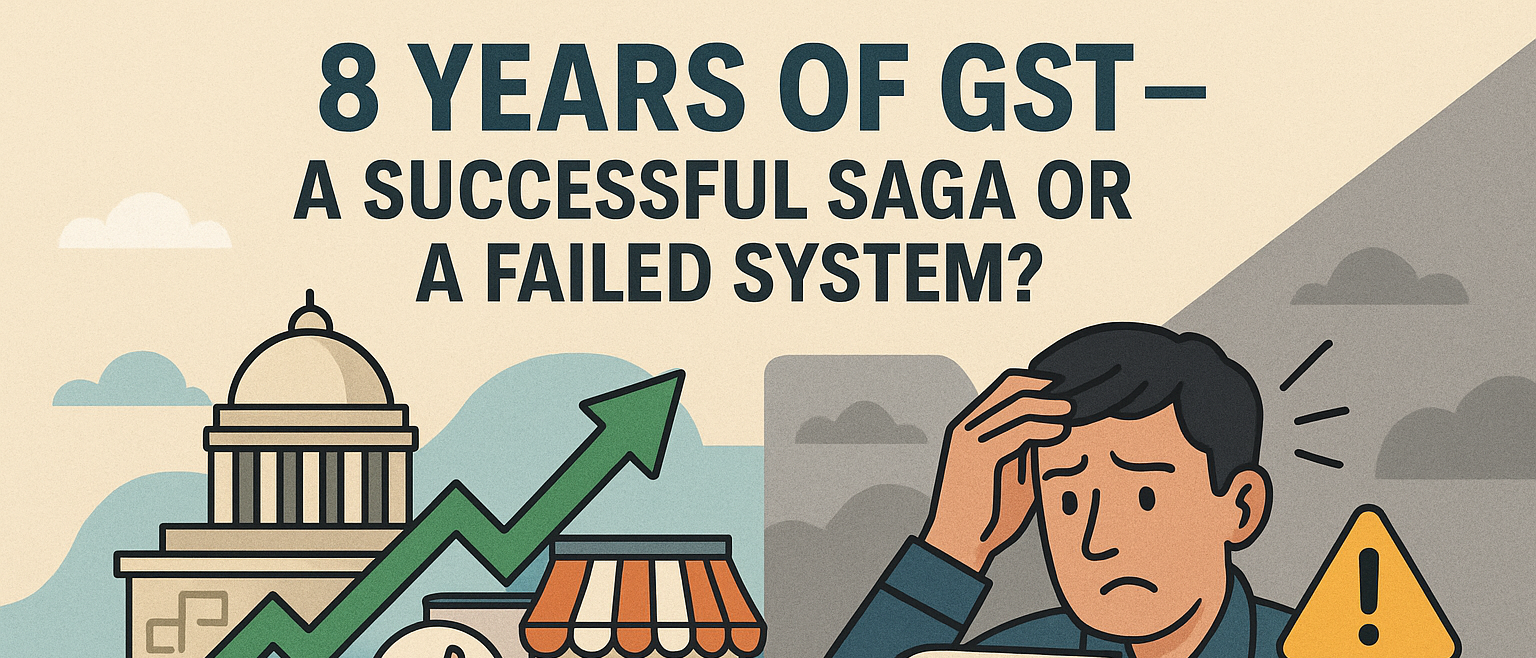

Introduction
Goods & Services Tax (GST) was introduced with the vision of creating a unified market under the slogan “One Nation, One Tax.” It aimed to simplify the complex indirect tax system, eliminate cascading taxes, boost compliance, and increase government revenue. Over the past eight years, GST has evolved into a critical pillar of India’s economic framework, contributing significantly to formalizing the economy and expanding the tax base.
Background History
The journey towards GST began decades before its implementation. The reform of India’s indirect tax regime started in 1986 with the introduction of MODVAT (Modified Value Added Tax). Subsequent efforts by various governments, including early VAT discussions under Prime Minister P.V. Narasimha Rao and Finance Minister Manmohan Singh, laid the groundwork. The idea of a unified GST was formally proposed in 1999 during Prime Minister Atal Bihari Vajpayee’s tenure, with a committee led by Asim Dasgupta tasked with designing the GST model and backend technology known as the GST Network (GSTN).
Despite efforts, the GST implementation faced numerous delays due to political, administrative, and technical challenges. Finally, on the midnight of June 30 to July 1, 2017, the GST was launched in a historic parliamentary session, marking a new era in India’s indirect taxation.
Challenges Overcome in These 8 Years
The initial years of GST implementation were marked by significant teething problems. Early challenges included:
Despite these hurdles, the government took proactive steps such as introducing the e-way bill system, quarterly filing options for small taxpayers, and enhanced IT infrastructure. Compliance improved with the adoption of digital tools and automation. The tax base expanded significantly, and GST collections have shown steady growth, with FY 2024-25 recording the highest-ever gross collection of Rs. 22.08 lakh crore, doubling in five years. Economists have termed GST as one of India’s biggest success stories in the last decade, highlighting its role in increasing tax revenue and bringing more businesses into the formal economy.
Prevailing Challenges
Despite its successes, GST continues to face several challenges:
Way Forward
The future of GST in India is promising but requires continuous reforms and technological integration. Key areas for the way forward include:
Conclusion
Eight years after its launch, GST has emerged as a transformative force in India’s indirect tax landscape. It has unified a fragmented tax system, increased government revenues, and formalized the economy. While initial challenges were significant, continuous reforms and technology adoption have strengthened the system. However, to realize GST’s full potential, further simplification, enhanced compliance mechanisms, and better stakeholder engagement are essential. The journey of GST is ongoing, and with sustained efforts, it promises to be a cornerstone of India’s economic growth and fiscal stability for years to come.
CA Sunil Khandelwal
Partner
© 2025 Agarwal R C & Co.. All Rights Reserved.